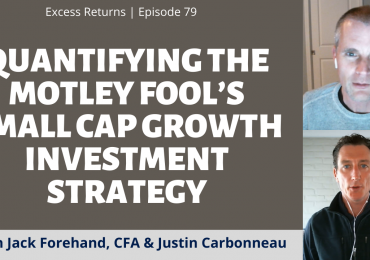The big question in the market these days seems to be, “Have we hit a bottom?” After enduring a bear market that has lasted nearly 18 months and cut the value of the S&P 500 in half, it’s certainly a reasonable question. But in the latest issue of my Validea Hot List newsletter, I explain that now is no time to be sitting on the sidelines trying to wait for a clear, precise bottom.
In reality, any bottom-call is just an educated guess — and, given the depth of this crisis, the unprecedented government actions made in response to it, and the sheer panic gripping many investors, trying to figure out whether we’ve actually hit bottom yet is something of an exercise in futility. You could analyze the heck out of every indicator you can get your hands on, and in the end you might not be much better off than if you’d just flipped a coin to decide whether we’ve bottomed or not.
For long-term investors — those with horizons of three, five, ten years (which, in my opinion, should be the only type of investor dealing in stocks) — now is a time to step back and consider the bigger picture, and not get caught up in overanalyzing where the bottom is. The bottom line is that stocks, by just about every valuation measure, are undervalued. Yes, valuations fooled most investors a year or two ago, when massive leverage had propped up earnings, making P/E ratios and other metrics artificially low. But now, we’ve been in a recessionary climate for more than 15 months, credit is moving at a snail’s pace, and the most conservative valuation measures are saying stocks are cheap.
Among those valuation metrics are the 10-year (Shiller) price/earnings ratio, which is now around 12, significantly below the 16.4 historical average. Another example is Tobin’s Q Ratio, which divideds the total market value of stocks by their total asset value (or replacement cost). John Mihaljevic of The Manual of Ideas blog wrote recently that the market’s Q Ratio was at 0.43 in mid-March, below its historical average of 0.76. (At the end of 2007, stocks were above that level, at 0.89, indicating they were overvalued.)
Another reason to be bullish, I believe, involves the effects the Federal Reserve’s actions could have on the economy. While the huge increase in the Fed’s balance sheet may well be necessary to pull the economy out of this mess, it’s looking more and more like we will be in store for some serious inflation once the economy gets back on its feet. And history has shown that fixed-income investment vehicles like bonds, T-Bills, gold, and money market accounts can have their nominal gains wiped out by inflation — even during times of only average inflation. But because of their ability to produce increasing earnings streams, stocks have been able to post solid real, after-inflation long-term returns throughout history. Some top investment minds — like those at bond giant PIMCO — are saying inflation could start to really kick in as soon as 2010.
Of course, inflation could take longer to materialize, and stocks could still go lower from here. Both the 10-year P/E and Tobin’s Q have been lower during other economic crises. But the problem is that if stocks retreat to even lower valuations from here, it will be because of either fear, or some new, yet-unknown fundamental event or events. So, the bottom line is this: If you think you can predict investors’ emotional states, or how an unprecedented economic crisis will play out, then go ahead and wait for the bottom. I suffer no such delusions, however. Rather than playing the risky game of bottom-calling — which more often than not leads to investors missing the big initial push of a new bull run — I’ll continue to put money into undervalued stocks. And, just as it has tended to do throughout more than two centuries of stock market history, I expect such a practice to yield strong returns over the long haul, regardless of what happens today, tomorrow, or next week.








